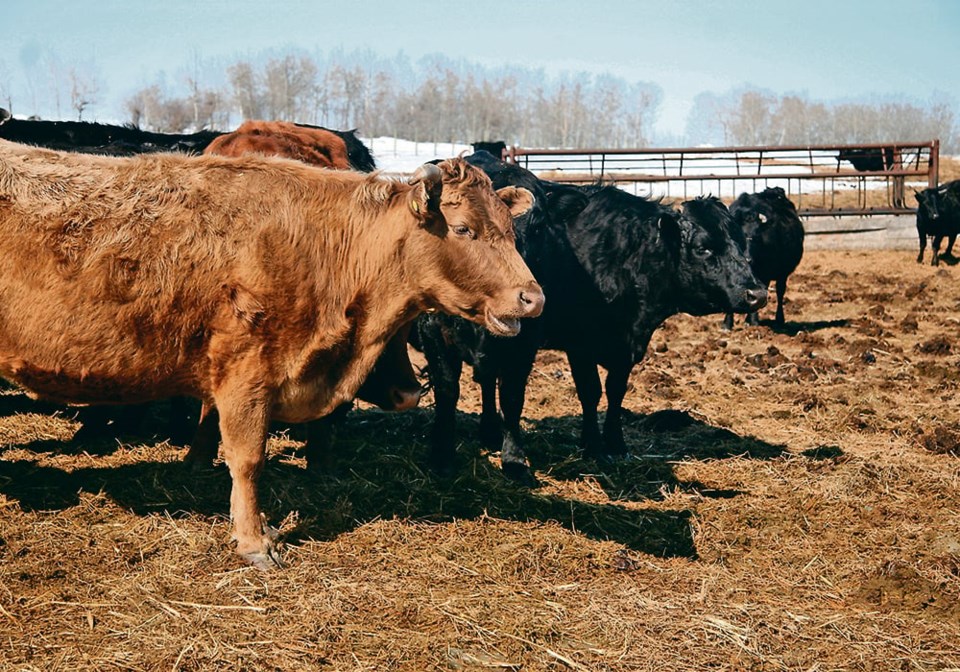WESTERN PRODUCER — Vaccines are important tools for reducing the risk from infectious disease.
Vaccinating cows and heifers before calving increases the quality of colostrum, which protects the newborn calf.
“Typically, we vaccinate the cow to protect the cow. In this case we are also targeting her calf by helping her create better colostrum,” said Cheryl Waldner, professor in the department of large animal clinical sciences at the University of Saskatchewan.
There are several kinds of vaccines used pre-calving and the ones most appropriate, safe and effective will vary by herd.
Heifers and cows not previously vaccinated will require two doses to ensure a good response. This also applies to any purchased cows with an unknown vaccine history.
“The first and the one most producers think about is scour vaccines. With scour vaccines, if it’s the first time an animal’s been vaccinated or if you’re uncertain of the vaccine history, then most vaccines that are on the market will require two doses,” said Waldner.
Timing is important. Antibodies produced by the cow need time to enter the colostrum.
“The specific recommended timing before calving for those vaccines is going to vary a bit from vaccine to vaccine, but the last dose should probably be about six weeks before calving,” she said.
Late calving cows in herds with long calving seasons might require a booster, particularly if the scours risk is high.
“For producers at the highest risk of calf scours, as an example, it is critical to ensure that the cows receive their vaccine according to label directions, often about a month or so before calving.
“However, the timing of this vaccine will produce the best response for cows calving in the first cycle and to a lesser extent early in the second cycle,” Waldner said.
In late calving cows, protection in the colostrum can drop by the time they give birth unless a booster is given.
Calves born later in the season are typically most at risk from infectious diseases such as scours and pneumonia, whether from a contaminated environment or older calves.
“These late calving cows can sometimes benefit from another booster before they calve. I would recommend producers talk to their veterinarian about what vaccines to use and when in their herd,” she said.
The protection provided by giving pre-calving vaccines to cows only works if the calf can ingest enough colostrum shortly after birth.
“If the calf is at risk of not getting enough colostrum because of a difficult calving or sick, thin or bad mother, consider tubing the calf ideally with colostrum milked from their dam,” Waldner said.
Otherwise, colostrum from another healthy cow in the same herd is the next best solution, followed by using frozen colostrum and then a commercial colostrum replacer.
Pre-calving vaccines can provide calf protection against scours, clostridial diseases and respiratory diseases.
“Vaccinating the pregnant cow for respiratory disease should be part of a conversation about vaccination plans for the calf that include when to best vaccinate and boost the calves in your herd and what type of product to use — injectable or intranasal,” she said.
“The bottom line is the type of vaccine that you’re going to use in your baby calf and when you’re going to vaccinate your baby calf is going to vary depending on when you have vaccinated your cow for respiratory disease.”
Vaccines are a critical part of the disease management toolbox, said Waldner.
However, they must be part of a package that includes good bio-security, calving ground management and nutrition.
“Even the best vaccines will be overwhelmed if disease pressure is too high.”
Other advice:
- Avoid adding newly purchased pregnant cows, heifers or cow-calf pairs to the calving herd immediately before and during calving season.
- Move cow-calf pairs out of the calving area and onto clean nursery pastures or move the cows yet to calve onto clean calving grounds to reduce disease pressure.
- Provide good nutrition through feed with adequate and balanced protein and energy, primary and trace minerals and vitamins.
“We know that good biosecurity, reducing exposure to infectious disease and good nutrition do improve calf health and reduce time spent treating sick calves and calf losses. We’ve got good evidence that all of these are important factors from field studies in Western Canada,” Waldner said.
“The nutritionist almost should be right at the top of the list because without good nutrition, we impact the calf’s immune system and we impact the quality and the quantity of the colostrum that the calf is going to get and how fast and how ready it’s going to be to get up and suck.”
Waldner recommends following vaccine labels to ensure they are administered with the right technique and right dose at the right time.
“This is particularly important when vaccinating pregnant cows to ensure the vaccines are both safe and effective. For example, some modified live vaccines can cause abortions in pregnant cows if not used exactly according to label directions,” she said.
“If you give a vaccine too early, it won’t work properly. If you don’t give the vaccine fast enough, it’s not going to work properly.”
Vaccine temperature and type of needle are additional factors.
“If vaccine freezes, it’ll lose its potency. If the vaccine gets too warm it’ll lose its potency. If the vaccine syringes are cleaned with disinfectants we can damage the vaccine,” she said.
Farmers get high marks for vaccine handling, however.
“We just completed a survey in 2021 of vaccine use across Canada with a group of producers that were part of our Canadian cow-calf surveillance network. The vast majority of those producers were using the recommended vaccines and reported using them according to directions,” she said.

